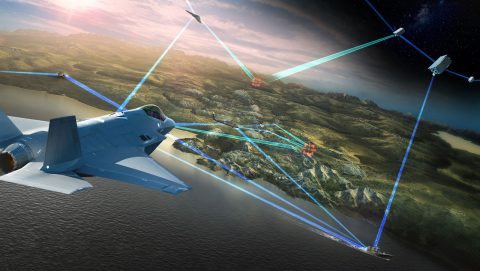Uncharted Waters: Ten Things You Didn't Know About GPS
Recently, the newest Global Positioning System (GPS) III Satellite, SV08 "Katherine Johnson," successfully launched from Cape Canaveral Space Force Station in Florida and is now undergoing on-orbit commissioning. This liftoff accelerated the standard launch preparations timeline to just over three months, demonstrating resilience and speed for a crucial national security mission.
Did you know that while the GPS has been around for decades, it’s constantly being modernized? This evolution is fueled by the growing demands of an increasingly connected and fast-moving world. As technologies like autonomous vehicles, unmanned aerial systems and smart infrastructure become more prevalent, the need for highly accurate, resilient and secure positioning, navigation and timing (PNT) capabilities has never been more critical.
What started as a tool for military navigation has become one of the most essential technologies on the planet. Today, GPS powers everything, from secure military operations to disaster response, financial networks and navigation apps on your phone.
Here are ten things you might not know about this powerful, space-based network:
With more than 6 billion users globally, GPS supports nearly 75 percent of the world’s population, delivering trusted positioning, navigation and timing services that impact daily life on a massive scale.
2. It actually carries two separate signals.
GPS carries two separate signals: one for civilian use, and a more secure signal for military purposes. This dual-signal capability ensures that critical military operations receive the highest level of precision and security when it matters most.
3. The high-quality signal has been made available to everyday users.
In 1996, President Clinton issued a directive making GPS' high-quality signal available to everyday users, paving the way for widespread adoption and innovation. This shift enabled development of the countless GPS-based applications and services that we enjoy today.
4. GPS helps with daily things most people may not even be aware of.
This technology helps maintain the reliability and efficiency of our critical infrastructure, like synchronization of timing across power grids. From smart homes to smart cities, GPS is the backbone that keeps our modern world running smoothly.
5. Contrary to popular belief, it takes four GPS satellites to calculate our location, not three.
This process – called trilateration – uses an additional fourth GPS satellite to correct any inherent timing errors in GPS receivers, while the core three satellites pinpoint our latitude and longitude. This complex process happens in a matter of seconds, allowing us to get accurate directions and navigate through unfamiliar territory with ease.
Since then, GPS has become an indispensable tool for both military and civilian applications. From humble beginnings to global phenomenon, GPS has come a long way, and its impact will only continue to grow.
8. Hedy Lamarr, a Hollywood actress and inventor, developed the frequency-hopping technology that laid the groundwork for modern GPS.
Her groundbreaking work in the 1940s paved the way for the development of spread-spectrum communication technologies, which ultimately gave way to services like GPS.

By measuring the frequency shift of signals transmitted by GPS satellites, receivers on our devices can calculate precise position and velocity. This complex science is what makes GPS possible, and it's a testament to human ingenuity and innovation.
Each GPS satellite has an atomic clock on board, which is used to generate the precise timing signals that are transmitted to GPS receivers. These clocks are so accurate that they only drift by about one second every 100,000 years.
As technology advances, GPS continues to modernize and improve with new satellites and signal upgrades being developed to meet the growing demands of a rapidly changing world. From improved accuracy to enhanced security, GPS is constantly evolving to meet the needs of its users. Whether you're a soldier a scientist or just a curious explorer GPS is the ultimate tool for navigating the unknown.
As a leader in global security and innovation, Lockheed Martin is committed to pushing the boundaries of what's possible with GPS technology. By exploring new applications and advancements, we're working to create a safer more connected world for generations to come.




